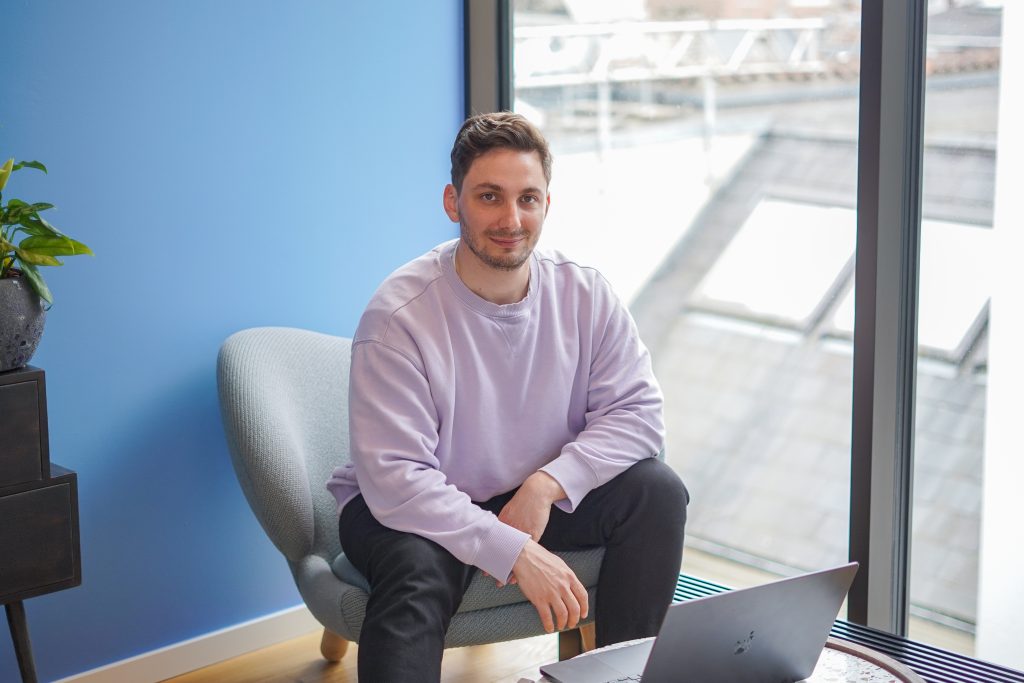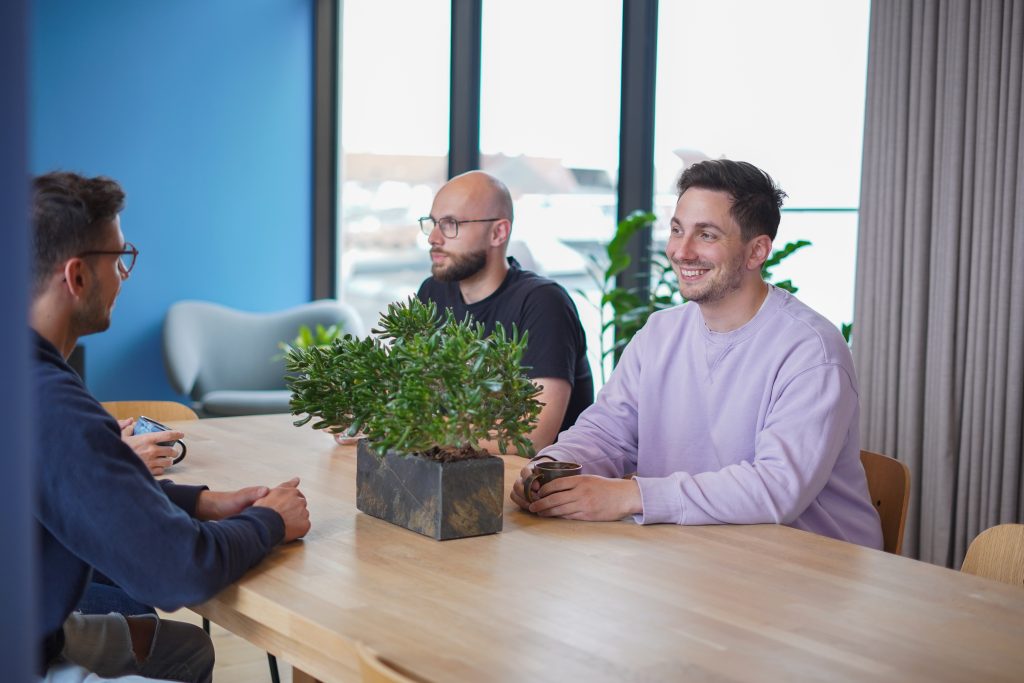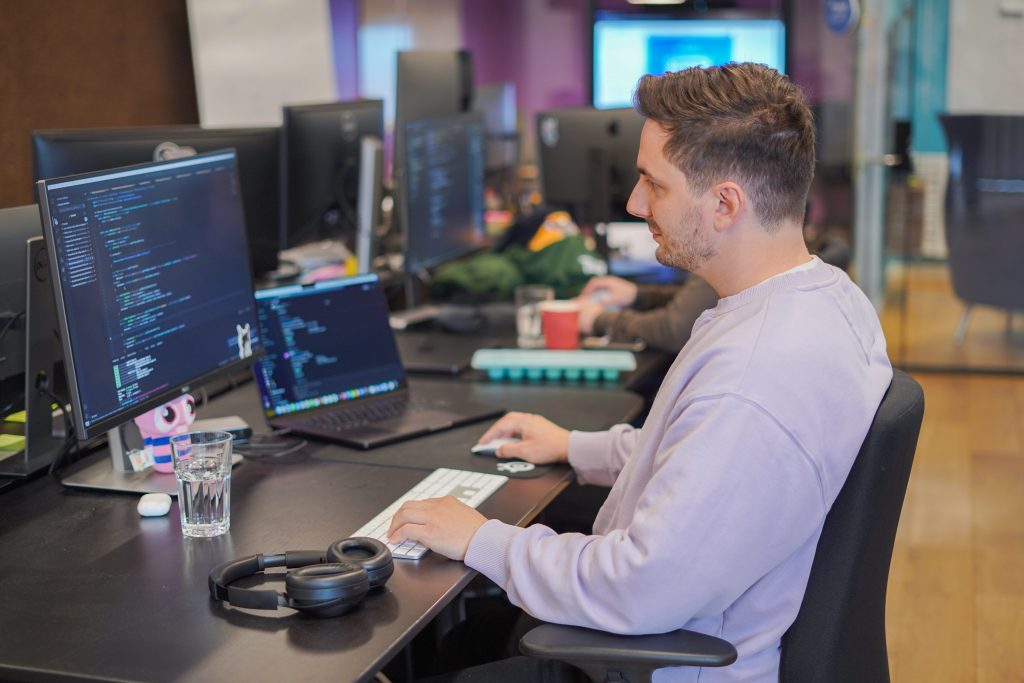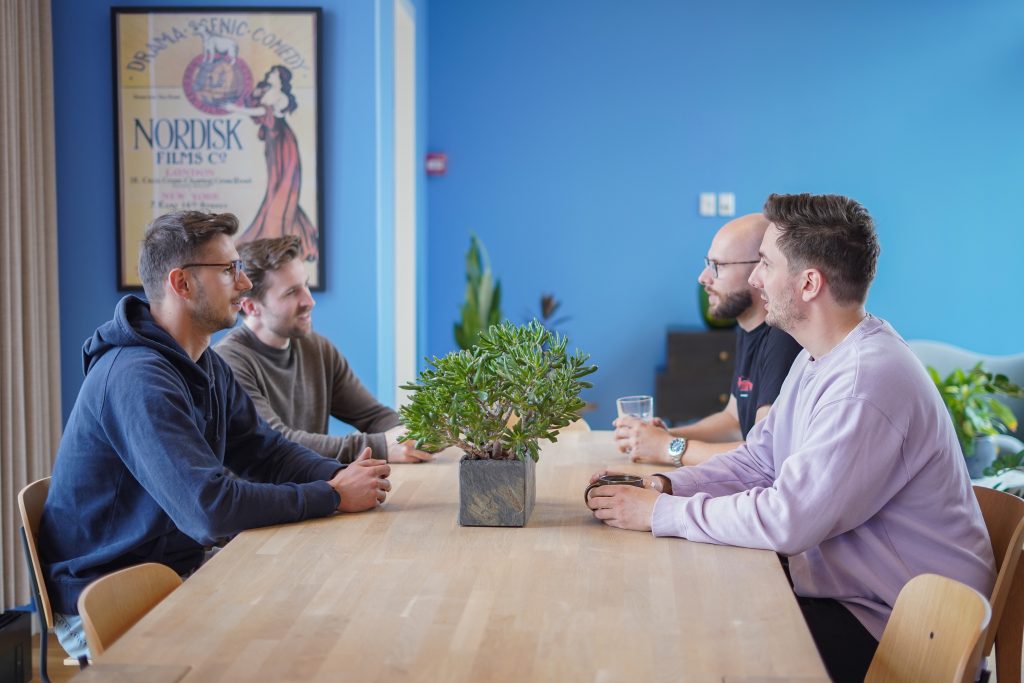It’s Time for Growth – with Vera Kozlenko
At Tactile, we encourage our team members to take ownership of their own development and drive their upskilling to match the needs of the company, as well as their own aspirations.
The desire to upskill oneself is crucial for the success of our business, so having team members with that mindset is what we believe is part of pushing us forward.
We chatted to our UI Game Artist, Vera Kozlenko, to learn more about how she grew into the most passionate AI Artist within the company 👏
Read more about how she upskills by blending UI and AI below 🚀

Tactile: Hi Vera, can you tell us a little bit about what your role was when you started at Tactile?
Vera: I initially applied for a 2D Artist position but was instead offered the role of a UI Artist.
In this capacity, I joined Lily’s Garden Product team, where I worked on creating new in-game features and other UI-related elements, contributing directly to the game’s user experience and visual polish.
Tactile: How have you grown and developed in your role since then?
Vera: Although my background was originally focused on illustration and 3D art, working on Lily’s Garden sparked my interest in expanding my technical expertise.
I closed all knowledge gaps on my own and significantly improved my Unity and animation skills. Over time, I moved to creating animations directly in Unity, and in recent months, I’ve grown passionate about experimenting with shaders to create visual effects.
Tactile: So how did you end up diving deeper and deeper into the world of AI?
Vera: I have a Master’s in Mathematics and Applied Computer Science, so I’ve always been drawn to both the visual and technical sides of art. Working as a UI Artist gave me the ideal opportunity to combine my strong technical foundation with a creative role, especially now with the rise of AI tools. I explored how other artists use AI in their workflows and was inspired by the quality and originality of their results.
The ComfyUI interface didn’t intimidate me, so I was very curious, motivated and felt a strong drive to innovate. And so I began setting aside 1–2 days each sprint to learn and experiment with new AI models. This self-driven exploration helped me bring technical innovation into our production pipeline and evolve my creative process.
It works great for concept art.
Tactile: How has your day-to-day changed since you incorporated more AI into your workflows?
Vera: I continue to work as a UI Artist, but AI has become a core part of my daily workflow. I use our in-house plugin for prototyping, sketching, and polishing assets. I can now create any asset using AI alone, or combine it with 3D or 2D, depending on the needs of the project. I really enjoy working with image-to-image workflows – taking a sketch or a 3D model and turning it into a polished, visually appealing result.
For one task, I generated a depth map from my 3D model and used a ControlNet-based workflow to let AI handle the color pass. It helped me to quickly explore and find color combinations I really liked.
I tested it for fun, but in the end, I just finished the chests by hand.
My daily routine has also evolved: I help to maintain our internal AI tools, monitor the status of our AI machines and our custom Tactile Photoshop plugin, and make sure everything runs smoothly. I assist artists when something breaks or gets stuck, run short training sessions, and support anyone interested in using AI in their creative workflow.
Tactile: Do you have any tips for artists learning about how they can use AI in their work? Where is a good place to start?
Vera: If you’re just starting to explore AI in art, my advice is: watch how other artists work. See what models they use, how they build their pipelines, and what kind of results they get. Take a moment to reflect on what exactly you admire in their results, and try to understand what personally resonates with you in those interests. For example, I never used to enjoy creating characters, but now the idea of designing one doesn’t feel intimidating anymore.
When it comes to more technical topics, my advice is this: try building your own workflows with Stable Diffusion or Flux using ComfyUI. Start with something simple like text-to-image, then move on to image-to-image, learn masks, and so on. That’s the foundation. After that, you can explore custom styles and more advanced setups.
Don’t expect perfect results right away – that’s totally normal. It takes time to understand how to get the look you want. And most importantly, remember: AI is just another tool. It won’t replace your creativity, but it can help you work faster, try new things, and bring your ideas to life in new ways.
Tactile: What do your development plans look like for the future?
Vera: I’m excited to explore new AI models for 3D and video generation. It’s a direction I want to spend more time on in the coming months. I’m especially interested in models that can run locally in ComfyUI. For now, I’m focused on testing the latest updates to the model we use, since staying up to date is essential when things are moving this fast.
Thank you for the lovely chat, Vera 💜
It’s Time for Talent – with Kerstin Edin Stewart
Hi, my name is Kerstin, it’s nice to e-meet you! 👋
I joined Tactile at the end of the summer of 2023 as a Game-UI artist. I work on Lily’s Garden where I create art for new events, updating existing UI, and now game board pieces.
🌱 Before Tactile
I’ve always loved to make art, and – as a lifelong nerd – I’ve always loved video games, so becoming a Game Artist seemed like a perfect fit.
I studied at The Game Assembly (TGA) in Malmö and got an internship at King where I stayed for several years. I’ve worked for various game studios in Barcelona, London, and remotely.
💜 Joining Tactile
Since I joined, we’ve introduced Scrum, enabling cross-disciplinary collaboration. It’s been a great way to work more agile and gain a deeper understanding of how other departments operate. I’ve had the opportunity to be a part of several teams, which has helped me to connect with more colleagues and to begin mentoring and supporting other artists.
I recently returned from maternity leave as well, and Tactile has been incredibly supportive, both in organizing the leave and accommodating my requests for returning to work. It’s also genuinely a great place for parents, with a strong emphasis on family and a healthy work-life balance.
💪 Having an impact
My team is part of Lily’s Garden Game Board Art department, where we focus on crafting fun and engaging experiences for players interacting with the core gameplay. I’m especially motivated by the creative process of bringing new ideas, such as game pieces and events, through the entire development pipeline, from concept to implementation.
💡 What can you do at Tactile that you can’t do elsewhere?
At Tactile, we embrace an open and collaborative culture where anyone can talk to anyone. Roles are broad by design, allowing us to work across entire pipelines from start to finish. Within the art department, this means that we not only create assets, but also implement them ourselves, which ensures that they function as intended in the game.
📚 The keys to success
If you’re looking to get into the gaming industry, here’s some tips from my own experience.
In general: Embrace experimentation within (and possibly outside) your discipline, and venture beyond your familiar territory occasionally. Don’t hesitate to explore new possibilities. Numerous excellent game development schools exist. I recommend exploring options that include internships at actual game studios.
For Artists: At TGA I was often told to not have fanart or manga in my portfolio, I consistently did so despite being discouraged. My belief is that passion for a subject enhances the quality of artistic work, making it shine more brightly than work done solely to please others. Your art is ultimately for yourself.
I also want to add – if you have the opportunity, I highly recommend trying to work abroad. For some, it comes naturally; for others, it’s a challenge. Uprooting your life is never easy, but even a short time abroad can be a humbling and deeply rewarding experience.
It’s Time for Talent – with Tamás László
Hi, my name is Tamás, it’s nice to e-meet you! 👋
I joined Tactile at the beginning of September 2024 as a Backend Engineer. I am working on the LiveOps side of our games, which is where we continuously update the games, create tournaments and other in-game events, and it is also where the games communicate with our databases.

🌱 Before Tactile
I was a wayward child and was not into computer science at all. After I got my degree in plant protection, I felt like the geek in me wanted to surface, so I started to learn programming. Then Covid hit, so it was the perfect time to bunker in and go all in with the help of a coding bootcamp.
After that I found my footing in the tech workspace. I first worked for a small company and later a bigger, multinational company as a Backend Engineer for web applications. Since I’ve been a gamer for most of my life, when I saw that Tactile is hiring developers with web development experience, I knew that it would be a dream to get the job – even though I had no idea what LiveOps is 😀
💜 Joining Tactile
The first couple of months was a tsunami of information since the domain at Tactile is so specific to the mobile games industry. There were a lot of concepts to learn, even if the actual work that I do is very similar to my previous web development experience. On top of that, I also relocated to Denmark, so there were a lot of things to discover and get familiar with within a short amount of time. Luckily, Tactile supported me a lot in this period.
This is going to be the biggest cliché, but one of the biggest highlights of working at Tactile is definitely the people. On day one, I might have felt like the least qualified person in the room (which can be a good thing in itself!), but everyone on my team was very friendly and welcoming, so I instantly felt like I belonged.
I have been here for eight months now and I have grown a lot, but I also still have some way to go. Having said that, I do truly feel like I am a part of the team and can bring my own ideas to the table. A recurring theme I noticed is that the company is still growing and we have ambitious plans which will shape how we build our services (not to give away any spoilers 🤫). It’s pretty cool to be able to learn together with a bunch of motivated colleagues about a topic none of us are that familiar with (yet).

💪 Having an impact
As I mentioned before, my team maintains the LiveOps part of the games, which is – explained very simply – a tool for our product teams to create events in the games. This tool, written in React.js and Node.js, also enables them to interact with our players via push notifications or support messages, along with a bunch of other things. On the other side of all of this, our games are communicating with the shared backend, which we develop, in order to get all the data that needs to be shared between the different systems and devices.
My favorite part of working with the LiveOps team is that we harbor a very professional attitude towards programming while maintaining a light hearted atmosphere and having loads of good laughs.

To elaborate on what I mean by that, we have weekly meetings to align on coding standards and to help each other with solving issues which we’re currently facing. We hold book clubs to keep ourselves up to date and keep flames of motivation blazing. We believe in going well instead of going fast, and we assign resources to improve the quality of our codebase well ahead of time, not when the walls start to crumble.
🚀 What can you do at Tactile that you can’t do elsewhere
One thing that sets us apart from other companies is definitely the amount of cake we consume on our floor – it probably goes well beyond the industry standard 🤣 I would say that Tactile is a very good place to bring out the best in you. In my experience, we take our profession seriously, but nobody tries to act like they are better than the others, which creates a space where you can safely share your ideas and be a part of the team, not just a cog in the wheel.

💡 The keys to success
I believe that now more than ever, it’s important to have a good understanding of how systems work, instead of what is the syntax of the latest JavaScript framework. I believe that most workplaces look for this at the moment, since anybody can ask any large language model to build the next GTA, but if you don’t know how it should work, you probably wouldn’t get very far.
